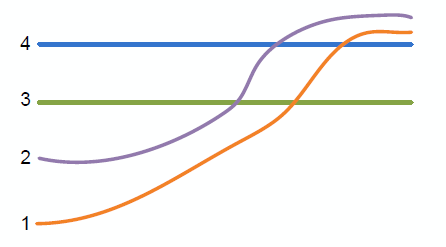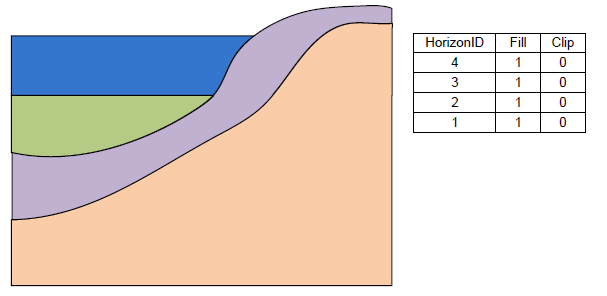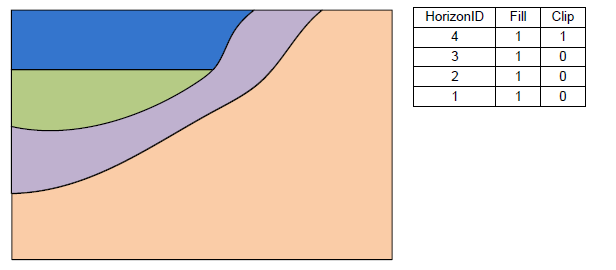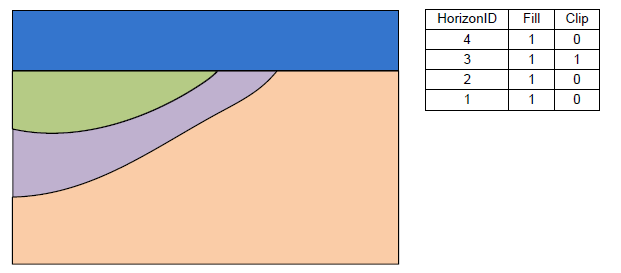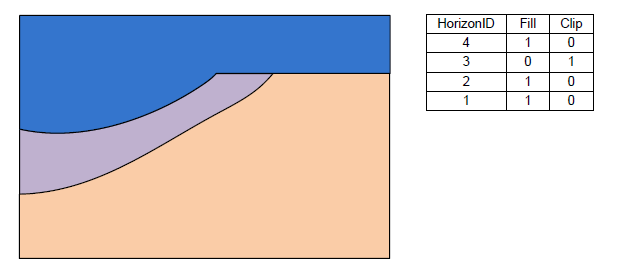3D UGrid from Rasters Tool: Difference between revisions
No edit summary |
No edit summary |
||
| Line 1: | Line 1: | ||
{{3D UGrid from Rasters Tool}} | {{3D UGrid from Rasters Tool}} | ||
[[Category:Toolbox]] | [[Category:Toolbox UGrid]] | ||
Latest revision as of 15:11, 24 October 2023
3D UGrid from Rasters
The 3D UGrid from Rasters tool is used to create a 3D UGrid from multiple rasters and a 2D UGrid by extruding the 2D UGrid and creating layers inbetween the rasters using the horizons approach. The resulting UGrid will be "stacked", meaning, there is no vertical sub-discretization of layers and the horizontal discretization of all layers is the same. Thus, no layers will pinch out, but layers may have zero thickness.
Input parameters
- 2D UGrid – The input 2D UGrid that will be used.
- Rasters – A table of rasters and their properties.
- Horizon – The horizon number. Horizons are automatically numbered consecutively in the order that the strata are “deposited” (from the bottom up).
- Fill – If checked, the raster will be used in the interpolation process for the associated UGrid point sheet (the points between cell layers) and one or more layers will be created below the raster.
- Clip – If checked, all rasters below (with a smaller horizon number) will not be permitted to go above the raster.
- Sublayers – Number of layers to create between the raster and the next raster below that has Fill checked. The default is 1.
- Proportions – Sublayer proportions as a space delimited list of integers, size of Sublayers, where 1 is the base thickness. For example "1 1 2" indicates three sublayers with the first two being the same thickness and the third being twice as thick as the first. If blank, sublayers (if any) will be evenly proportioned.
- Target location – Whether to calculate elevations at the UGrid cell tops and bottoms or at the points. For MODFLOW models, "Cell tops and bottoms" is appropriate; for HydroGeoSphere, "Points".
- Minimum layer thickness – The minimum thickness every layer must have. If necessary, points are moved down to satisfy this criteria, except for the top sheet of points.
Output parameters
- 3D UGrid name – Name of the 3D UGrid that will be created. If left blank, a default name is used.
Current location in Toolbox
Unstructured Grids/3D UGrid from Rasters
Examples
The following figure shows a slice through raster surfaces that have been indexed with horizon IDs.
Example 1
Below we see the resulting stratigraphy if the Clip field is off for each raster.
Example 2
This example shows how the stratigraphy changes when the Clip field is turned on for the top raster.
Example 3
This example shows how the stratigraphy changes when the Clip field is turned on for the raster with horizon 3.
Example 4
The final example shows a case where the Fill field is off and the Clip field is on for the raster with horizon 3.
